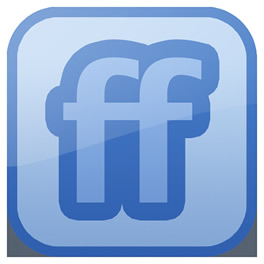
This is part two of a post on the session, Facebook, Twitter and Microblogging at Search Engine Strategies San Jose. Catch Part I:Twitter over here. This post talks about Facebook and FriendFeed.
Moderated by Kevin Ryan, the esteemed panel was composed of:
Who uses it? Not just college students anymore (Facebook was started as a way of connecting college students)
- 73% white, 14% black, 6% asian 6% oyher
- People who make a decent living, 30% over 100K
- People who have never attended college (43%)
- Over 90 million people are on it (dude from the audience spoke up to correct him from 40 million- later it’s revealed the dude is from Facebook! Kevin grilled him later too – stay tuned!)
- Connect with others
- Build relationships
- Great for branding
- Spread a message to the masses
- Facebook shows data about you others can respond to – for example, there’s a birthday reminder!
- Feeds – you can fill out a “status” on facebook (similar to a twitter update). Also actions you take on Facebook are shown (you join a group, you comment on someone’s picture
- Neil uses Simplaris Blogcast – each time he blogs, the post gets pinged to facebook

- Can create news and content streams replacing your feed reader
- Track topics of interest to you (go to advanced search page, type search phrase and choose “shared by everyone” can limit to blog entries, twitter tweets, whatever stream.
- Interact with Your Networks information (can comment on every item in friendfeed stream)
- Powerful reputation management too
- Establishing a network, RSS monitoring, Mobile rep management, Socila Media Profile, for SERPs. Building Brand Advocates.
- Monitor who’s monitoring you
- Utilize third party tools to manage noise and make engagements read
- alert thingy
- twhirl
- friendfeedmachine
- feedalizer
- noiseriver
- Mashup video, photos, and other content into your stream, allowing instant engagement with content with feedalizer
- Twitter is small, only a few million on twitter. We think it’s bigger than it is.
- Facebook – 90 million. Power of Facebook is in small networks.
- These tools are just surfacing peer to peer recommendations. We always trust what our peers say, but now it’s just surfacing that. Much easier for me to find things.
- Far more people read my column than could follow me on twitter.
- It’s the micro-interactions that build brands.
- Follow Zappos on twitter – it’s actually Tony Shea, CEO of zappos.com. He encourages employees to use twitter. Zappos is all about treating people like humans, and it’s the interaction that builds their brand.
- I would care more if someone linked to my story on their blog, than if an editor put my story on their cover.
- Facebook is young. The platform hadn’t been done before. Facebook made mistakes, too much freedom was given to developers. Give em some leeway, it hasn’t been that long.
Andy Beal:
Twitter is an enabler for networking. Imagine this: you tweet something. Someone who is following you decides to retweet it. One of THEIR followers has a technorati feed it gets put on, then someone from Wall Street Journal sees it and picks it up. This happens all the time.
Dave Snyder:
- Even if you don’t tweet yourself, at least monitor what other people are saying about you over tweets
- Twitter might not be here tomorrow, but it’s here and happening right now. So use it. People are engaging with your brand.
- Twitter is least successful when companies are using it as another way to push out marketing messages.
- It’s a step forward – real time communication on a larger scale.
THE ANGRY FACEBOOK GUY AND THE REAL FACEBOOK GUY (hence the title 🙂 .
Midway through the questions some folks started leaving and Kevin, called them out and asked them to take the microphone and tell why they were leaving. One guy was quite angry about Facebook being useless because of all the useless applications on it, and it didn’t do anything for his business. Kevin asked the Facebook guy in the audience his reaction to this (after telling us that Facebook declined his request to appear at this particular session).
Facebook guy
- Facebook did revolutionize the industry to open up the platform to third party developers
- It no longer requires you to install the application to randomly interact with it
- We’ve looked into application quality and we now reward apps that have better user experience and good feedback from users
- How apps do viral apps to friends (need certain quality scores in order to distribute)
- Neil Patel’s description was good depiction of the average end user experience but not an accurate reflection how marketers and businesses can use it – for more information go to Facebook business
Charlene Jaszewski is head honcho over at Smartypants Group, where consultants help small businesses and technology play nicely together. You can follow her on twitter @smartypantsgrp.








